|
|
Strainer
- Y Type & Basket Type |
|
|
Wide Range of Industrial Strainers & Filters Manufacturers and Exporter |
|

|
Cast Iron
Y Strainer Manufacturers
|

|
Cast Iron
Basket Strainer Manufacturers
|
|

|
Cast Carbon Steel
Y Strainer Manufacturer
|

|
Cast Carbon Steel
Basket Strainer Manufacturer
|
|
|

|
Cast Stainless Steel
Y Strainer Manufacturers |

|
Cast Stainless Steel
Basket Strainer |
|
|

|
Fabricated
Y Strainer Manufacturer |

|
Fabricated
Basket Strainer Manufacturer |
|
|

|
Y Type Strainer
Manufacturers |

|
Y Type Strainer
Manufacturers |
|
|

|
Basket Type Strainer
Manufacturer |

|
Basket Type Strainer
Manufacturer |
|
|

|
Pot Type Strainer
Manufacturers |

|
Pot Type Strainer
Manufacturers |
|
|

|
T Type Strainer
Manufacturer |

|
T Type Strainer
Manufacturer |
|
|

|
Simplex Type Strainer
Manufacturers |

|
Simplex Type
Basket Strainer Manufacturers |
|
|

|
Duplex Type Strainer
Manufacturer |

|
Duplex Type
Basket Strainer Manufacturer |
|
|

|
Conical
Type Strainer Manufacturers |

|
Conical
Type Strainer Manufacturers |
|
|

|
Temporarily
Inline Strainer Manufacturer |

|
Temporarily
Inline Strainer Manufacturer |
|
|

|
Rubber
lined Y Strainer Manufacturers |

|
Rubber
lined Basket Strainer Manufacturers |
|
|

|
P.T.F.E.
lined Y Strainer Manufacturer |

|
P.T.F.E.
lined Strainer Manufacturer |
|
|

|
Tailor
Made Strainer Manufacturers |

|
Tailor
Made Strainer Manufacturers |
|
|
|
|
What is Y Type Strainer?
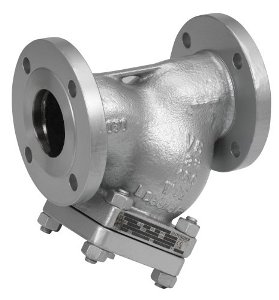
This
product is designed for remove foreign matter from pipe lines
and provides protection for pumps, meters, valves, and other
similar mechanical equipment, which is called as Strainer. Y Type strainers are named after their shape and
normally used for course filtration. But with large filtration
area can be used with fine mesh also. The strainer improves
the clearance in the medium, and prolongs the life of valves;
protect expensive pumps, meters and other equipments. It is
suitable for water, Air, Gas, petroleum, steam and other
fluids.
Dharmi Engineers manufacturers & exporters of wide range
of Industrial Strainer such as Y Type Strainer,
Y Type Filter, Y Strainer, Bolted Cover Y Strainer, Fabricated Y
Strainer, Y Type Strainer Fabricated, Inline Y Strainer, High
Filtration Area Y Strainer, Full Flow Y Strainer, Less Pressure Drop
Y Strainer, Rubberlined Y Strainer, Y Strainer with Drain, Y
Strainer with drain Ball Valve, Steam Y Strainer, Oil Y Strainer,
Steline Y Type Strainer, Fine Micron Y Strainer, 5 Times Area Y
Strainer, 3 Times Area Y Strainer, Easy Clean Y Strainer
manufacturer.
_____________________________________________________________________________________________________________
What is Basket Strainer?
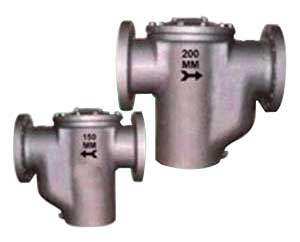 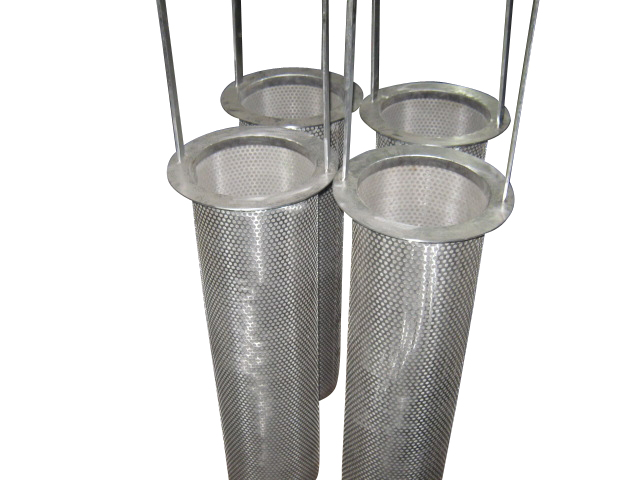
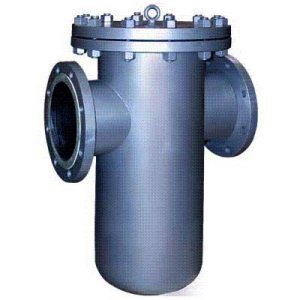 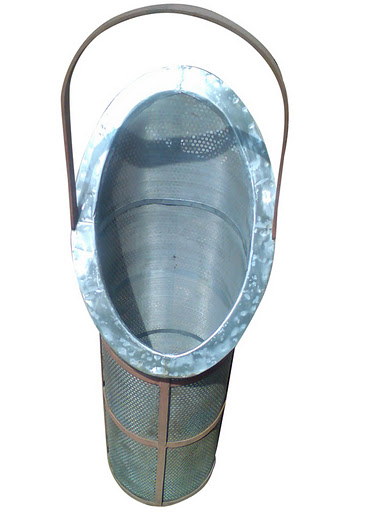
An
official definition adopted by the Fluid Controls Institute is
: “A closed vessel with cleanable screen element designed to
remove and retain foreign particles down to 0.001 inch
diameter from various flowing fluids.” Note the term
“foreign particles”. Strainers do not necessarily remove
only dirt. They take out material which is not wanted in the
fluid and this can sometime be a valuable product which may be
saved.
Basket
Strainer designed for remove foreign matter from pipe lines
and provides protection for pumps, meters, valves, and other
similar mechanical equipment, which is called as Strainer.
Basket Strainers feature top removal of the screen. The screen
is in the form of a basket, with a lifting handle, so that all
particulate captured and retained by the screen can be easily
removed for disposal. The particulate matter is captured in
the strainer basket. The line is then temporarily shut down
and the basket removed for cleaning or replacement. Baskets
are fabricated from stainless perforated sheet. The Basket
Strainer is also called as Pot Strainer. The strainer improves
the clearance in the medium, and prolongs the life of valves;
protect expensive pumps, meters and other equipments. It is
suitable for water, Air, Gas, petroleum, steam and other
fluids.
Dharmi Engineers manufacturer & exporter of wide range of
Industrial Strainer such as Basket
Strainer, Basket Type Strainer, Simplex Basket Strainer, Simplex
Strainer, Basket Filter, Basket Type Filter, Simplex Basket Filter,
Simplex Type Basket Filters, Duplex Basket Strainer, Duplex
Strainer, Duplex Type Basket Strainer, Duplex Filter, Duplex Type
Basket Filter, Duplex Basket Filter, Inline Basket Strainer, Easy
Change Basket Strainer, Easy Clean Basket Strainer Filter, Less
Pressure Drop Basket Strainer, High Filtration Basket Type Strainer,
Fine Filtration Basket Strainer, Easy Removalve Cover Basket
Strainer, Davit Arm Cover Basket Type Strainers, Inline Basket
Strainer, Inline Basket Filter, Offline Basket Strainer, Duplex Strainer with 3 Way Ball
Valve, Duplex Basket Strainer with Butterfly Valve, Bolted Cover
Basket Strainer, Pot Strainer, Pot Type Basket Strainer, Pot Type
Filter, Pot Type Basket Filters, Pot Strainers, Casted Pot Strainer,
Cast Iron Basket Strainer, Cast Steel Basket Strainer, SS Basket
Strainer, Fabricated Basket Strainer, Basket Type Strainer
Fabricated, Full Flow Basket Strainer, Basket Strainer with Leg
Support.
_____________________________________________________________________________________________________________
The
Difference between Strainer & Filter
Actually
there isn’t any since a strainer is, in reality, a coarse filter.
The question is then one of semantics. Generally it is assumed that
if the particle to be removed is not visible to the naked eye, the
unit is filtering, and if the particle is visible, the unit is
straining. The average human eye can detect a specific particle
between 50 and 70 micros. Most people cannot see anything smaller
than 325 mesh, or 44 microns. Since 200 mesh is equivalent to 74
microns, a general rule would be that if the screening device is
coarser than 200 mesh, it is a strainer and if it is finer than 200
mesh it is a filter.
One
of the best uses for a strainer is in conjunction with a filter. By
installing a strainer directly ahead of a filter, the large heavy
pieces which would quickly clog the filter are removed. The filter
is then free to do its major job of fine particle removal and does
not have to be cleaned so often
_____________________________________________________________________________________________________________
What
is Strainer Open Area Ratio & Important
Amount
of free open area is the ratio of the open area through the strainer
basket to the cross sectional area of the pipe. A common term used
in strainer design is “Open Area Ratio” (OAR) equals the total
open basket area divided by the internal cross-sectional area of the
inlet pipe. It is a measure of relative debris-holding capacity and
is usually between 1 to 4 times the inlet pipe area.
The
open area ratio in strainer element refers to the amount of free
open of the strainer and basket element. It is the ratio of the open
area through the strainer basket to the cross sectional area of the
pipeline. Anything less may cause excessive pressure drop. The ratio
is calculated with a clean basket and as the basket begins to clog
the ratio will drop. Unless there is a wide safety margin the area
through the basket may quickly become smaller than the pipe area.
This will reduce flow through the strainer and necessitate very
frequent cleaning. A small open area ratio also means the holding
capacity of the basket is small - an important consideration if the
amount of solid matter to be removed is large.
Open
Area Ratio
=
Total Basket Element Open Area / Inlet Pipe Cross Sectional Area
(in. squared)
To
determine the anticipated maximum differential pressure (DP), it is
common to request the DP at 75% blockage. At 75% blockage, there is
a 75% reduction in flow area compared to clean, and a DP equal to
approximately 4X that of the clean DP Value. This is based on a
proportional analysis with open basket area being inversely
proportional to DP.
_____________________________________________________________________________________________________________
How to select right Strainer Element?
The
strainer element (it can be for y type strainer for basket type
strainer) is the heart of a strainer since this is where the
unwanted material is trapped. Strainer baskets elements are made of
perforated sheet metal and a wide range of opening sizes is
available. The size of the basket perforation should be slightly
smaller than the minimum particle size to be removed. Using a
smaller perforation opening than necessary only means the basket
will fill and clog more quickly and have to be cleaned more often.
By the using of fine element mesh sheet along with peforated sheet
can achive fine filtration up to 5 Micron.
_____________________________________________________________________________________________________________
When to Clean Strainer Element?
Strainer
element should be cleaned on a regular basis, not when they become
clogged, to insure that they are not damaged by too high a
differential pressure. One more reason for frequent cleaning is a
phenomenon known as “runaway buildup”. As dirt in a strainer
basket accumulates and as the mesh or perforations plug up, pressure
drop increases. The curve of this pressure difference is not a
straight line. It starts out as a low slope, but as the basket clogs
more and more it turns upward faster and faster. As the dirt builds
up the free open area in the basket gets smaller and smaller.
_____________________________________________________________________________________________________________
MESH TO MICRON CONVERSION
CHART
| U.S.
MESH |
INCHES |
MICRONS |
MILIMETERS |
| 3 |
0.2650 |
6730 |
6.730 |
| 4 |
0.1870 |
4760 |
4.760 |
| 5 |
0.1570 |
4000 |
4.000 |
| 6 |
0.1320 |
3360 |
3.360 |
| 7 |
0.1110 |
2830 |
2.830 |
| 8 |
0.0937 |
2380 |
2.380 |
| 10 |
0.0787 |
2000 |
2.000 |
| 12 |
0.0661 |
1680 |
1.680 |
| 14 |
0.0555 |
1410 |
1.410 |
| 16 |
0.0469 |
1190 |
1.190 |
| 18 |
0.0394 |
1000 |
1.000 |
| 20 |
0.0331 |
841 |
0.841 |
| 25 |
0.0280 |
707 |
0.707 |
| 30 |
0.0232 |
595 |
0.595 |
| 35 |
0.0197 |
500 |
0.500 |
| 40 |
0.0165 |
400 |
0.400 |
| 45 |
0.0138 |
354 |
0.354 |
| 50 |
0.0117 |
297 |
0.297 |
| 60 |
0.0098 |
250 |
0.250 |
| 70 |
0.0083 |
210 |
0.210 |
| 80 |
0.0070 |
177 |
0.177 |
| 100 |
0.0059 |
149 |
0.149 |
| 120 |
0.0049 |
125 |
0.125 |
| 140 |
0.0041 |
105 |
0.105 |
| 170 |
0.0035 |
88 |
0.088 |
| 200 |
0.0029 |
74 |
0.074 |
| 230 |
0.0024 |
63 |
0.063 |
| 270 |
0.0021 |
53 |
0.053 |
| 325 |
0.0017 |
44 |
0.044 |
| 400 |
0.0015 |
37 |
0.037 |
Strainer
Mesh
Sizes and Microns
Strainer
- What does mesh size
mean? Figuring out mesh sizes is simple. All you do is count the number of openings in one inch of
screen (in the
United States
, anyway.) The number of
openings is the mesh size. So
a 4-mesh screen means there are four little squares across one
linear inch of screen. A
100-mesh screen has 100 openings, and so on. As the number describing the mesh size increases, the size of
the particles decreases. Higher
numbers equal finer material. Mesh
size is not a precise measurement of particle size.
Strainer
- What do the minus (-)
and plus (+) plus signs mean when describing mesh sizes?
Here’s a simple example of how they work. –200-mesh would mean that all particles smaller than
200-mesh would pass through. +200 mesh means that all the particles
200-mesh or larger are retained.
Strainer
- How fine do screens
get? That depends on the wire thickness.
If you think about it, the finer the weave, the closer the
wires get together, eventually leaving no space between them at all.
For this reason, beyond 325-mesh particle size is usually described
in “microns.”
Strainer
- What is a micron? A micron is another measurement of particle size.
A micron is one-millionth of a meter or one twenty-five
thousandth of an inch.
|